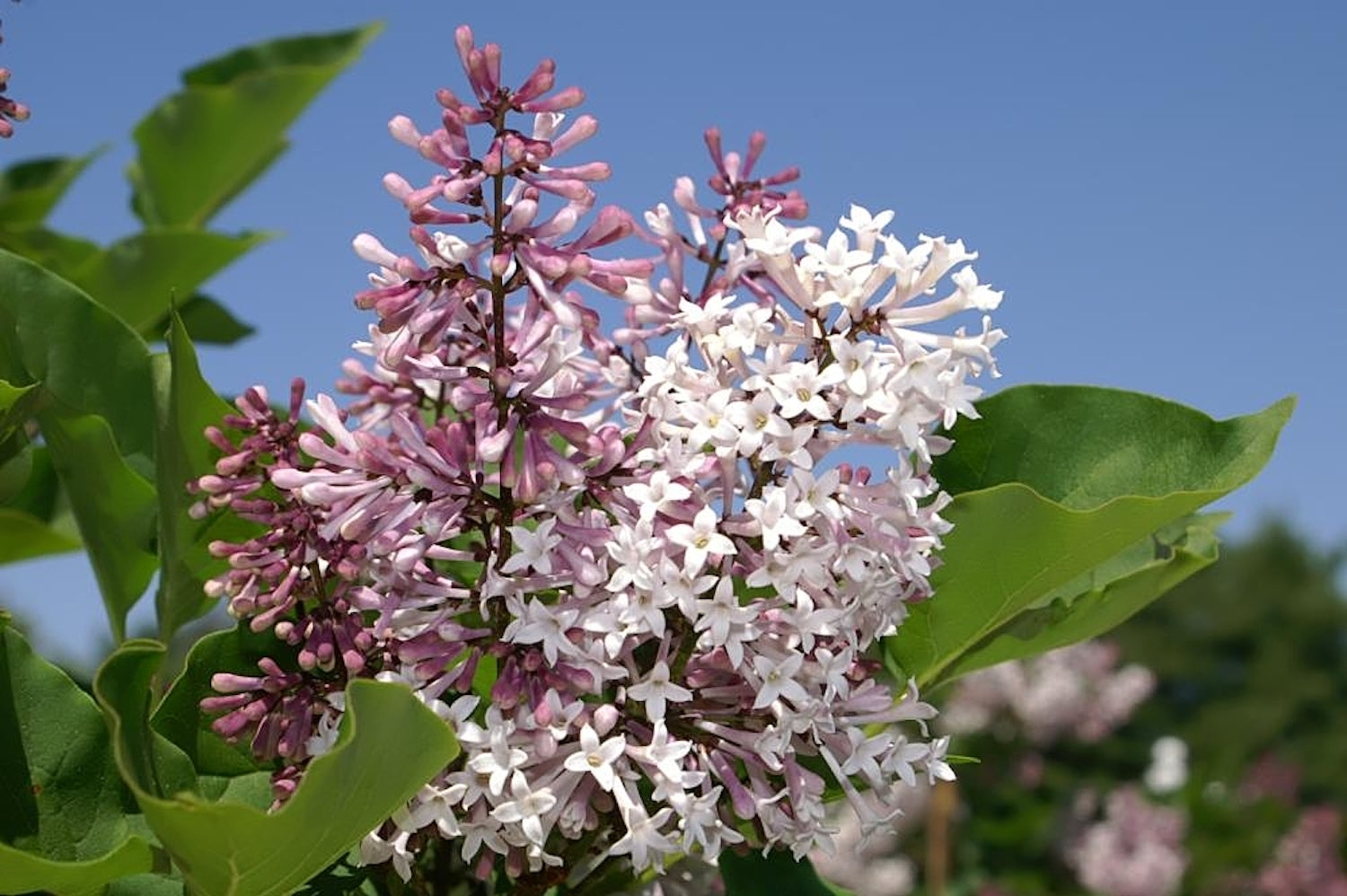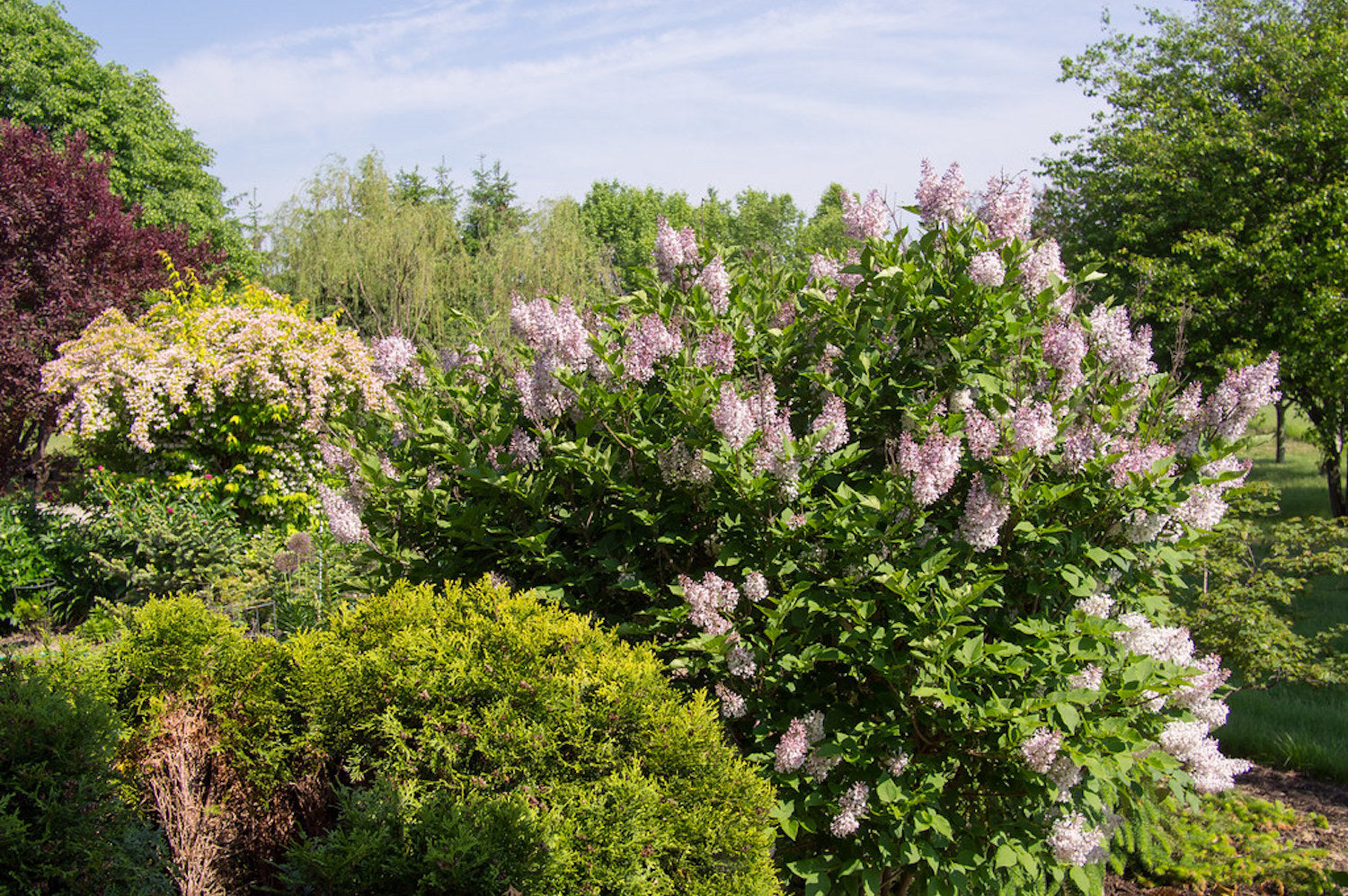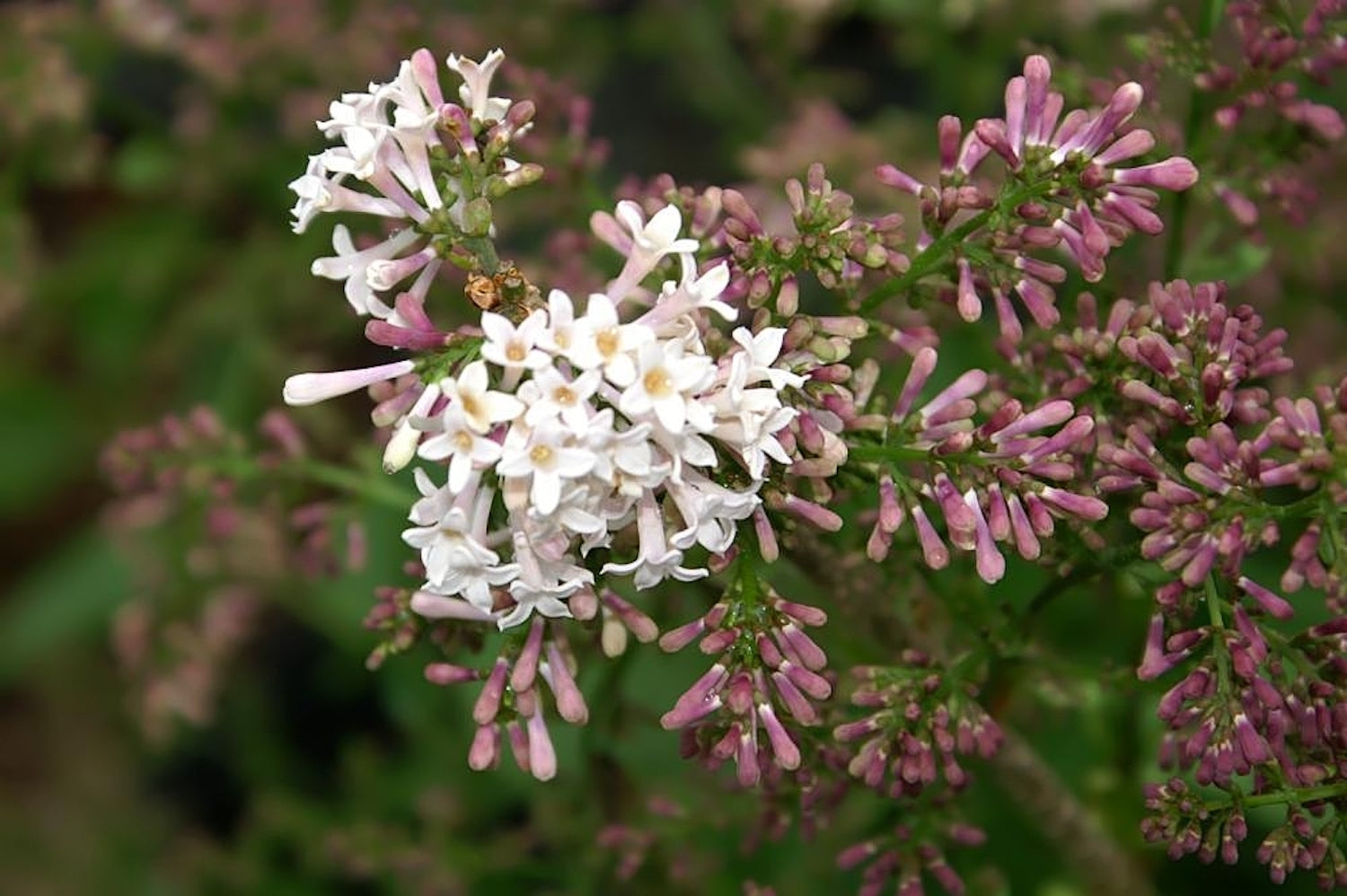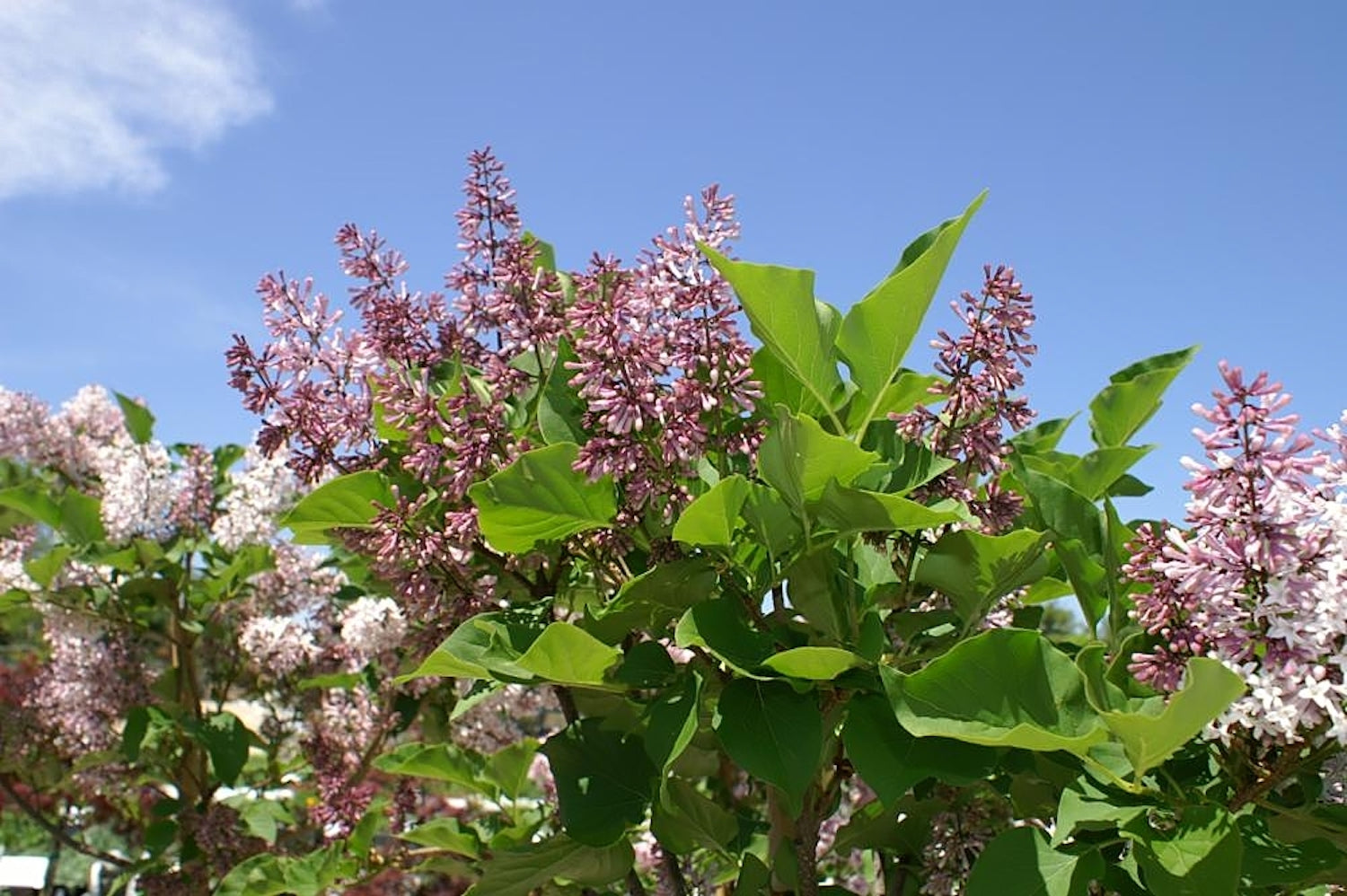Syringa pubescens subsp. patula 'Miss Kim'
Approx. 0.5 litre pot
About this cultivar:
Syringa pubescens subsp. patula 'Miss Kim' is a Korean lilac which was introduced by American Elwyn M. Meader (1910-1996) while stationed in Korea as an army horticulturalist. He developed the cultivar from seeds of a wild lilac bush he found in Korea's Pouk Han Mountains in 1947 and decided to name it after 'all the Miss Kims in Korea'.
The species pubescens is commonly called Korean or Manchurian lilac. The epithet actually means 'becoming downy', referring to the texture of the leaves.
It is a small, spreading, bushy, deciduous shrub with dark green, wavy-edged leaves and purple-pink buds opening to fragrant pale purple flowers, fading to near white with age. It has Royal Horticultural Society Award of Garden Merit (RHS AGM).
- Position: Full sun, partial shade
- Soil: Almost any soil, grows well in Ballyrobert
- Flowers: April, May, June
-
Other features: Grows well in Ballyrobert, Royal Horticultural Society Award of Garden Merit (RHS AGM)
- Hardiness: H6 - Hardy in all of UK and northern Europe (-20 to -15°C), Fully hardy - grows well in Ballyrobert!
- Habit: Clump forming, bushy
- Foliage: Deciduous
- Height: 120 - 215 cm (4 - 7 ft)
- Spread: 100 - 150 cm (3.5 - 5 ft)
- Time to full growth: 10 to 20 years
- Plant type: Shrub, tree
- Colour: Green, pink, purple, white
- Goes well with: -
About this genus:
Syringa is a genus of 12 currently recognized species of flowering woody plants in the olive family (Oleaceae), native to woodland and scrub from southeastern Europe to eastern Asia, and widely cultivated in temperate areas elsewhere. The genus was first formally described by Carl Linnaeus in his 1753 bestseller ‘Species Plantarum’. The name being derived from the Ancient Greek word syrinx meaning ‘pipe’ or ‘tube’ and refers to the hollow branches of Syringa vulgaris. The English common name ‘lilac’ is from the French ‘lilac’ via the Arabic ‘lilak’ from Persian ‘nilak’ meaning ‘bluish’.
They are small trees, with quite a wide range of sizes. Though they can be kept quite small if pruned, in fact this is done so commercially, and many were originally bred for the cut flower trade. The term French lilac is often used to refer to modern double-flowered cultivars, thanks to the work of prolific French breeder Victor Lemoine (1823-1911) the first foreigner to receive the Victorian Medal of Horticulture of the Royal Horticultural Society in London. The leaves are opposite in arrangement, and their shape is simple and heart-shaped to broad lanceolate in most species, but pinnate in a few others. In spring or summer, depending on the species, the flowers emerge on large panicles and often have a strong fragrance. The usual flower colour is, you guessed it, lilac. However, white, pale yellow, pink, and even burgundy flowers are also found. The fruit is a dry, brown capsule, splitting in two at maturity to release the two winged seeds.
People really love the scent and the blossom of lilacs. When I lived in the USA if felt like every botanic garden had to have a lilac festival. Much like the Japanese have cherry blossom festivals, I guess. Perhaps this was due to the famous poem ‘When Lilacs Last in the Dooryard Bloom'd’ by Walt Whitman (1819–1892) written as an elegy to President Abraham Lincoln shortly after his death. Or perhaps because they are so hardy and easy to grow - it can get very cold, very hot, or very dry in parts of America! The species Syringa vulgaris is the state flower of New Hampshire, because, according to New Hampshire historian Leon Anderson (1902-1983), ‘..it is symbolic of that hardy character of the men and women of the Granite State’.
According to the ‘Language of flowers’ Lilac coloured Syringa are often considered to symbolize the first emotions of love and white coloured Syringa symbolize youthful innocence or purity. In Greece, Macedonia, Lebanon, and Cyprus, Syringa is strongly associated with Easter time (it often flowers in Spring).
Lilacs are popular shrubs in parks and large gardens. Most of the types available might not be suitable for small gardens as they can get quite big if not cut back constantly, and if cut back constantly they might not look great. They flower on old wood and produce more flowers if unpruned. That having been said, some people really do love that scent and blossom in their gardens no matter what….
Concerning growing conditions, you guessed it again, like 99.999999999999% of plants Lilacs grow most successfully in well-drained soils and flower best in full sun. We also find they do well in most places that aren’t bogs, deserts, or dark dungeons. We tend to grow ours in hedges or at the back of a border, but if you are an aficionado why not grow as a specimen tree on its own?








